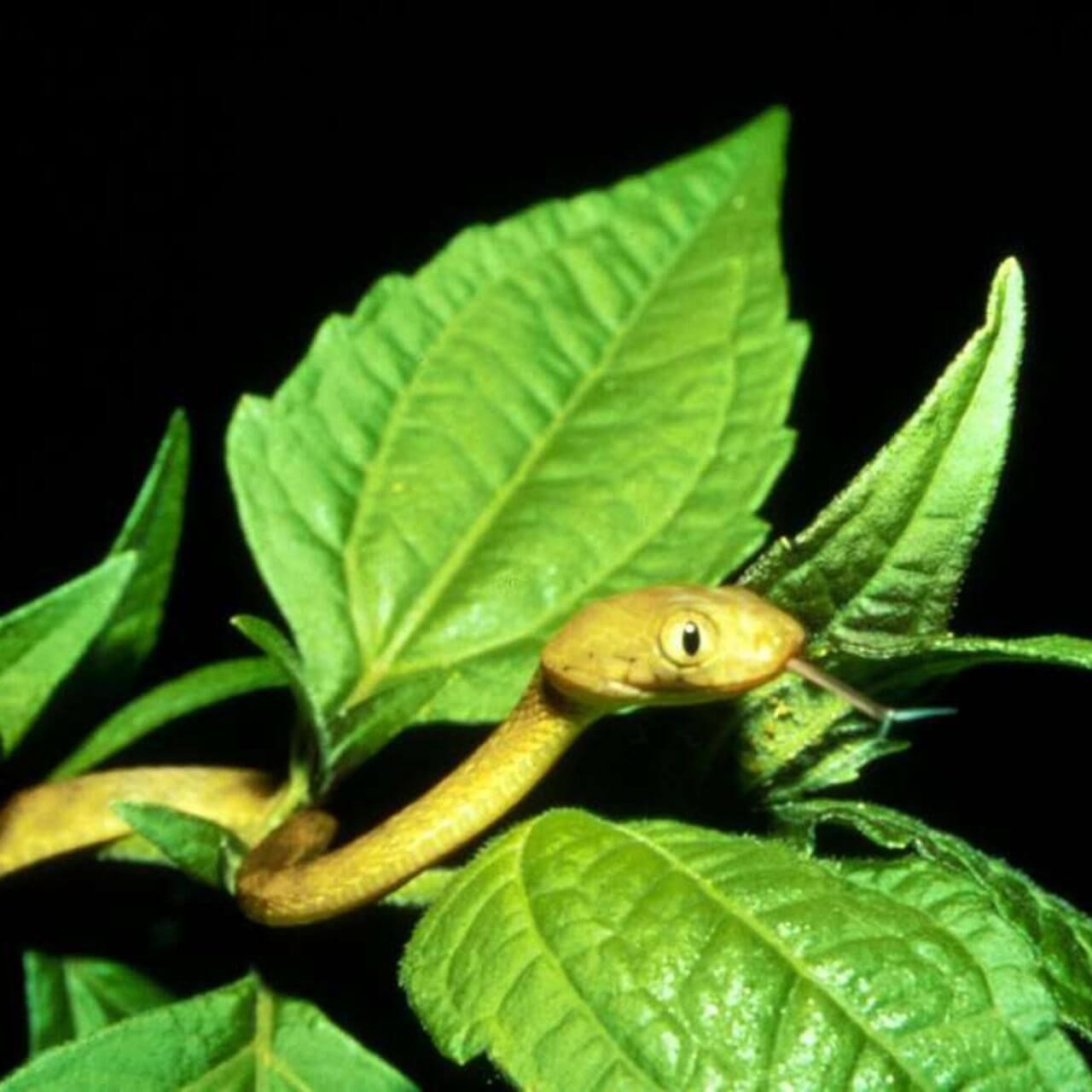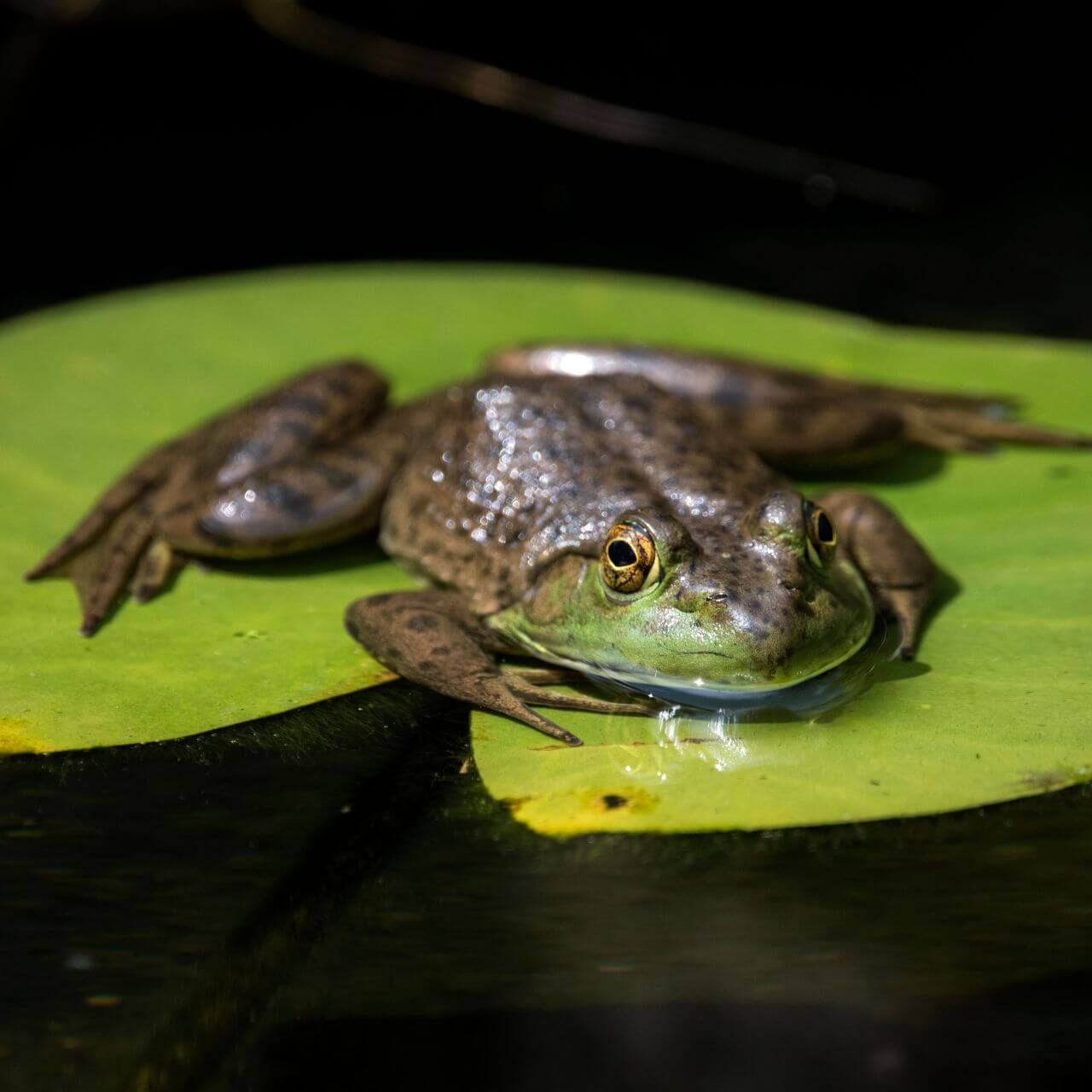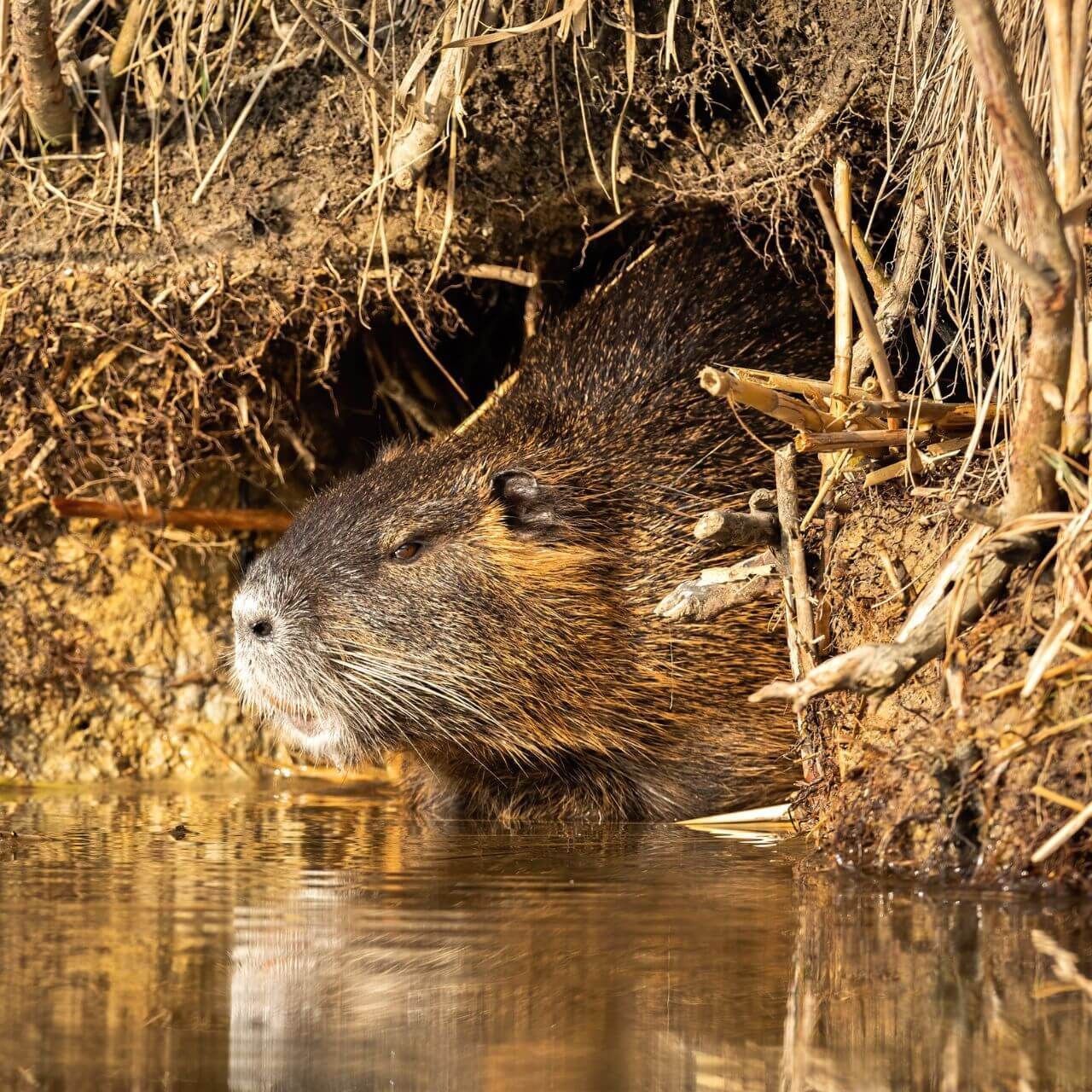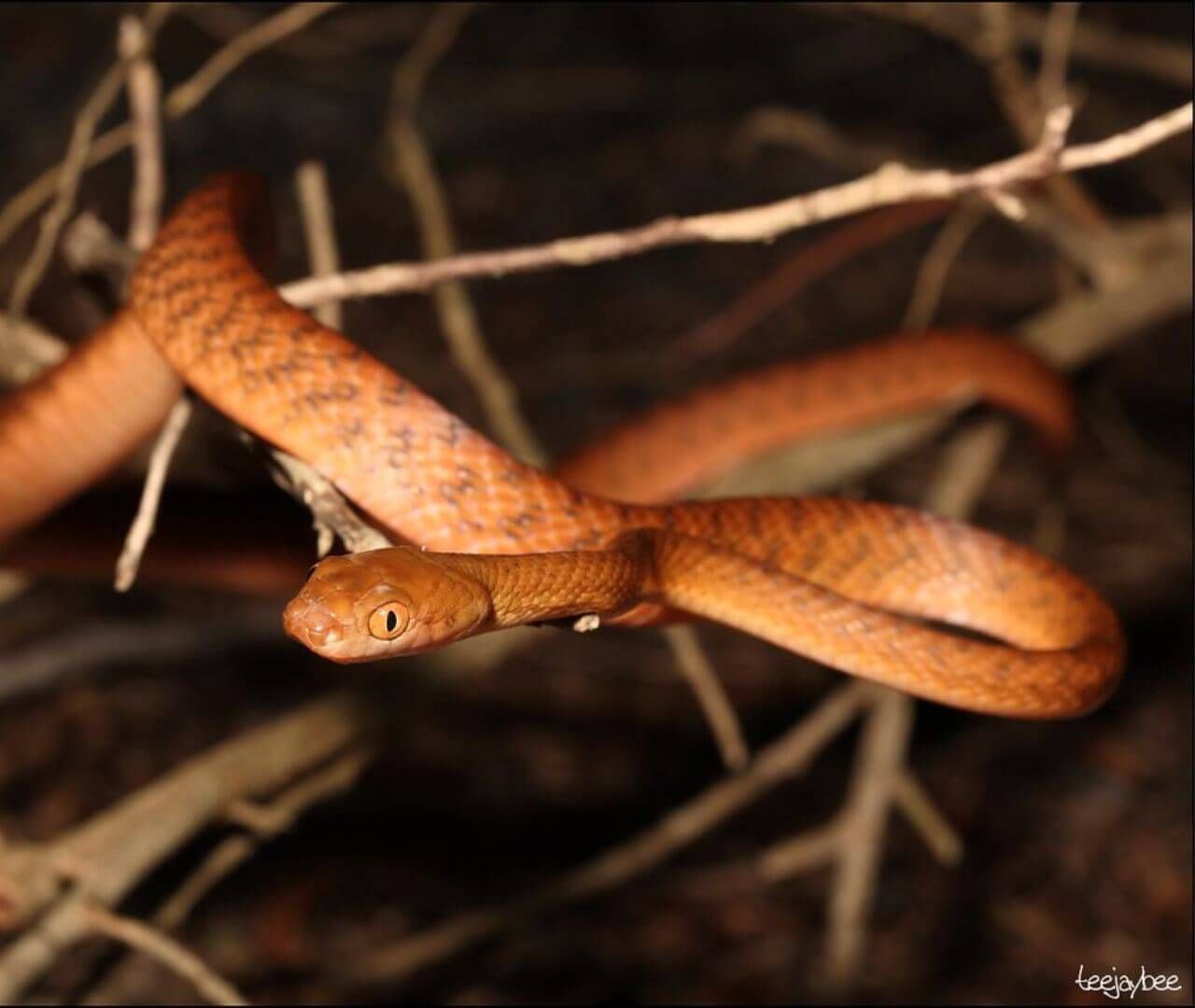Invasive Species

What Are Invasive Species?
Word of the Week
Endemic
An endemic species is only found in one area and nowhere else!
Koalas are endemic to Australia while saguaro cacti are endemic to the Sonoran Desert.
Why Are Invasive Species a Problem?

They Eat Native Species
Brown tree snakes are an invasive species on a small island called Guam. Songbirds on Guam had few predators before brown tree snakes arrived. Brown tree snakes feed heavily on songbirds and have caused some endemic birds to become extinct.

They Outcompete Native Species
American bullfrogs are an invasive species in the western part of North America. They are carnivores that feed on insects, worms, and even other frogs. They are bigger and more powerful than other frogs. When competing with other frogs for food, American bullfrogs usually win, meaning there is less food available for native frogs.

They Change the Ecosystem
Nutrias are an invasive species on many continents. They live in wetlands where they feed on aquatic plants. The roots of these plants hold soil in place, keeping wetlands stable. When nutrias eat large amounts of plants, the soil becomes loose and the wetland ecosystem can collapse.
Species Spotlight
Cane Toad
Rhinella marina
About 100 years ago, sugar farmers in Puerto Rico faced a big problem. Cane beetles were eating their sugar cane crops, and this was a problem in many places. To tackle the beetle problem, scientists introduced a large, bug-eating toad called the cane toad.
Cane toads are originally from tropical areas in Central and South America. These toads are poisonous and known for their big appetite. They usually feed on insects and small animals, like lizards and rodents. In the early 1900s, people brought cane toads to Puerto Rico to eat the cane beetles and protect the sugar cane crops – and it worked!
After success in Puerto Rico, cane toads were taken to many other countries, including Australia, to deal with pests. In Australia, thousands of cane toads were released over several years. Sadly, the cane toads didn't control the beetle population, and, even worse, they ate many important native species.
As invasive species, cane toads changed the native food web and outcompeted native toads for food. Few predators could eat them because of their poisonous skin, so their population kept growing.
Today, cane toads still pose a threat to native species in many countries and are seen as one of the most troublesome invasive species in the world.
Conservation Corner
Brown Tree Snakes in Guam
More than 70 years ago, a small island called Guam was full of songbirds, lizards, and many other small animals. With lots of food and few predators, these animals had the perfect habitat! However, this all changed when venomous brown tree snakes accidentally came to Guam.
Scientists hypothesize they probably arrived from Australia on a large ship. The brown tree snakes quickly moved across the island, causing lots of problems as their population grew. They ate a lot of native birds and lizards, causing many of them to become endangered or extinct. They crawled across power lines, causing the power to go out often. They also started living near people, putting pets and kids in danger because of their venom.
Since very few predators could eat the brown tree snakes in Guam, scientists and local people started catching and removing them. Scientists even dropped poisoned rats onto Guam to try to get rid of the brown tree snakes. Although these strategies helped reduce their population, brown tree snakes are still causing problems on Guam to this very day.
Today, the population size of brown tree snakes in Guam is shrinking mainly because they are running out of food. Still, scientists are working on ways to keep native birds and reptiles safe. They also use search dogs to find brown tree snakes on ships and planes to make sure they don't become invasive and cause the same problems on other islands.
Photo Credit: Creator - teejaybee - https://www.flickr.com/photos/teejaybee/4239189636
BRAIN BLAST
Scientists think brown tree snakes arrived to Guam on accident while they were hidden on a cargo ship or plane. They are working to make sure brown tree snakes don't accidently become invasive on other islands. Brainstorm a list of ways scientists can make sure brown tree snakes don't accidently end up on other ships or planes!
Invasive Species Challenge
Beginner
Download the packet below.
Select one invasive species to research. Complete the questions and drawing prompt. Then, discuss the question prompts as a group.
Expert
Download the packet below.
Select one invasive species to research. Complete each page of the packet to make "WANTED" posters for your invasive species.
Glossary
Carnivore
An animal that eats other animals.
Competition
Occurs when two organisms need the same limited resources.
Crop
A plant that is grown as food.
Ecosystem
An area of the planet filled with living and nonliving things that interact.
Endemic
Living in one place and nowhere else.
Hypothesis
An educated guess based on prior knowledge.
Invasive species
An organism that has been introduced to an area it is not native to.
Native Species
An organism that naturally lives in a particular region.
Organism
A living thing that can grow and survive. Animals, plants, and fungi are all organisms.
Poison
A toxin that is dangerous when eaten or absorbed through the skin.
Venom
A toxin that is injected with teeth or a stinger.
Sign Up for our Newsletter
Stay up to date with new adventures, live classes, deals, and more!

Helpful Resources
*Please note we do not offer refunds for EdZOOcating Adventures memberships. We recommend you explore the 3-day free trial prior to subscribing!*





